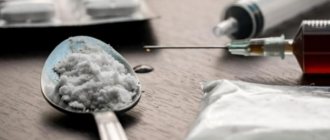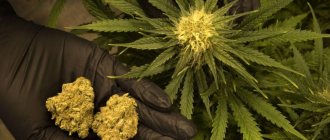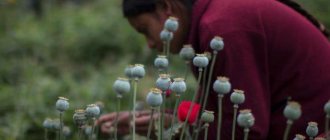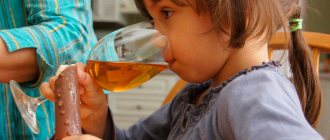Modern hospitals are quite safe and generally try to help the sick. Large hospitals separate patients by age and severity of condition. In general, in the department of neuroses, for the most part, there are adequate ordinary people. In the acute department there can be tough things.
They stay in the hospital from a week to two months (very rarely longer). If you are hospitalized at your own request, you can be discharged at any time! Read the law on psychiatric care in Russia.
About medications. We can talk about medications for a long time, I’ll write in detail sometime, but briefly: almost all antidepressants and tranquilizers cause addiction, but it’s quite possible to get off them! Medicines do not cure anxiety, or depression, or delirium, they relieve an acute condition and help you come to your senses so that you can figure out with a more or less fresh mind how you will continue to save yourself (spoiler: psychotherapy). Patients with severe diagnoses often take medications throughout their lives (schizophrenia, MDP, resistant depression). Patients with less dire diagnoses take antidepressants the longest (from three months, usually a year). Medicines sometimes work right away (lucky ones), usually they are selected, changed, and the dose is adjusted - this is very individual.
In the first week in the hospital, you will most likely be pumped full of antipsychotic drugs and you will sleep a lot, this is useful, the brain reboots and rests. Closer to discharge, your dose will be reduced and many will come out quite cheerful!
I think that being treated in a hospital is a good option:
- There is an opportunity to sleep as long as you like.
- There is no need to worry about daily matters.
- Medicines are selected by observing the dynamics every day, this is convenient for the doctor and you.
- You don’t need to buy different drugs and waste money on unsuitable ones in the end; after discharge, buy only what is definitely suitable.
- You will be examined by related specialists and will take blood and urine tests.
- A mental hospital is an existential place, you will think about life in a new way.
- It is possible to visit a psychotherapist for free.
I'll name the downsides:
- Almost always there are really bad living conditions: toilets have no doors and people smoke in them, the food is not tasty, leaving the territory is limited (you need permission to leave from a doctor), sharp objects and razors are strictly prohibited in the acute department, in the neurosis department they are issued upon request. medical post.
- Hospitalism is an addiction to doctors and the hospital regime; patients may begin to fear being left without the supervision of doctors.
- Stigmatization is when a label is attached that a person who has been treated by a psychiatrist, much less spent time in a hospital, is a psycho, abnormal, not like that. Often the patient himself begins to consider himself as such - this is self-stigmatization.
Notable Features:
- There are no forks and knives in the dining room, so as not to provoke intrusiveness or aggressive actions.
- All doors (except the doors to the wards) are opened with a special key, which only the staff has.
- Doctors make rounds once a week: a group of doctors walks through the wards and talks with each patient, this is a whole event for patients and nurses.
- You can contact your doctor at any time if you find one. Some doctors even give you their phone number and you can chat with them on WhatsApp about your symptoms.
- Medicines are taken on time, lining up, like in the movies.
- You can go for walks with the doctor’s permission, you can see relatives, you can use telephones (but not in all departments).
About the worst:
- Patients are not turned into zombies; large doses of drugs simply suppress activity and attention, but with decreasing dosages, activity returns.
- Psychotropic medications are not drugs, although they can cause addiction, like many other medications (blood pressure reducers, for example). Many patients have withdrawal syndrome, but it can be tolerated and the condition returns to normal.
- Some patients who are particularly resistant to drugs are given electroconvulsive therapy (ECT), where a current is sent to the brain. But it is not painful (anesthesia) and not dangerous, certainly not more dangerous than suicide from depression. I know people who have had these procedures and they are fine!
- No one will report to your work that you were treated in a mental hospital or a psychiatric hospital, unless the entry on the sick leave sheet gives you away.
How things work in a psychiatric hospital
— I am in a psychiatric hospital with depression. There are many people here with the same diagnosis. There is a huge aquarium in the corridor. The girl from the next room buried her face in him, was silent for a long time and said: “Fish... ******** [good] for you, fish,” - this is how Tatyana begins her story.
This tweet received more than 11 thousand likes and reposts and inspired the girl to create a whole thread about treatment in a psychiatric hospital - in the department of nervous disorders.
The first stereotype that Tatyana debunks concerns safety. No violent patients or straitjackets like in the movies.
- It's safe here. Everyone on my ward suffers from depression and anxiety. All sad, but not dangerous. There was only one case in a month when a dude was kicked out of the men's ward for masturbating on his neighbors. Apparently, he was jealous of the success of their therapy,” writes Tatyana.
The second stereotype is that treatment for depression in a clinic necessarily costs a fortune. Actually this is not true. The state pays for a month of hospital stay.
— I am at the institute named after. Bekhterev in St. Petersburg. The first visit to a psychotherapist is free of charge. If he says that you need to go to bed, you can choose paid hospitalization or budget. I'm on a budget. The state pays for a month of stay. While you are in the hospital, everything is free. Further visits to the doctor are paid, says Tatyana
But the food, as in many Russian hospitals, is very bad. But it's free.
“The food here is simply terrible.” It's impossible to eat. Make some friends before you come here. So that someone would bring normal food,” writes Tanya.
The third stereotype is that you cannot use technology and leave the territory. Actually this is not true. Tatyana emphasizes that the conditions of hospitalization depend on the diagnosis.
— They don’t take away equipment here. Visits are allowed every day. You are not put in a straitjacket. You are free to leave the area. We have depression, not schizophrenia. We want to kill ourselves, not others. Everyone understands that if you take away our phones, we will do it even faster,” Tatyana writes. “It’s quiet, calm and unbearably boring here.” So before you go to bed, subscribe to Netflix and load up on books. Then you will say thank you.
But the place where the hospital is located really does not contribute much to recovery.
— It’s very gloomy on the hospital grounds. Bare trees, gray buildings with bars, a huge pile of crows. Through their croaking one can hear: “You are a nonentity.” Force yourself to get out into the city at least once a week,” the girl writes.
Criminal liability for possession of marijuana
Marijuana on the territory of the Russian Federation is included in the list of prohibited substances NUMBER ONE, completely withdrawn from civil circulation.
The severity of the penalty for possession of marijuana depends on the amount of the substance found by law enforcement and the purpose of its purchase, sale or production.
The legislator has established that possession of any type of drug for the purpose of subsequent sale is punished more severely than for personal use.
If the marijuana is intended for personal consumption and is found in small doses, the actions of the violator will be interpreted according to the articles of the administrative code. Punishment for this may be in the form of a fine or administrative arrest.
Criminal prosecution for possession of marijuana, even for personal use, starts at 6 grams.
How is treatment and therapy carried out?
Many people do not understand what therapy looks like in a public clinic. Firstly, this is working with a psychotherapist.
- In a hospital, surrounded by depressed people - how will this help? Here you work with a psychotherapist every two days. The tablets are free here. You don’t have to look for money, which is also very reassuring. It’s better to treat yourself under the supervision of doctors while surrounded by sad people than to get drunk surrounded by happy people,” says the girl.
Secondly, this is drug treatment.
— Pills do not destroy your personality. During depression, you don’t even have the strength to get out of bed, let alone go to therapy. Pills don't cure depression. Pills are needed to artificially support a person. To have strength for therapy. It's like a depressive Theraflu. It simply relieves symptoms,” says Tanya.
At the same time, serious work is being done inside a person; defeating depression is not so easy.
— The brain resists therapy. For him, stopping suffering after years is a way out of his usual comfort zone. You will hate the psychologist and everything around you. The brain will convince you: “Brothers, we don’t need this. Let's get out of here, they won't help you. It's soft here at the bottom. Brother-a-a-n.” This relationship is long lasting. You need to know this and adjust yourself. Therapy is work. It will take years. Every day is a struggle. Constant struggle. It is very difficult not to give up. But this life is worth it,” the girl shares.
The girl admits that therapy has changed many of her attitudes.
— When delving into yourself, be prepared to lose yourself. This is scary. Your world will turn upside down. For example, I realized that all my life love = suffering. I fell in love with those who offended me. And for me, suffering and self-sacrifice = comfort. I realized with horror that I knew nothing about happiness or love. Oddly enough, postulates that contradict themselves coexist in the brain. You should only delve into this together with your doctor. You’ll be blown away by your ambivalence,” Tanya shares.
The girl urges anyone who suspects depression to be thoroughly examined.
— Take all the tests, examine your body. Nothing fuels depression like illness.
And if therapy does not help, then you need to be more careful in choosing a doctor.
— Not all doctors are professionals. First of all, they are people. You may not be able to communicate with them. If you initially don’t have the slightest sympathy for the doctor, or after a long time you realize that nothing is changing at all, change the doctor, Tanya advises.
The girl advises not to deny your illness, but to find help and support as quickly as possible.
- Don't be afraid to talk about your feelings. You pay money to be listened to. Don't deny your condition. Don't listen to your friends. Denying the existence of depression is like denying HIV. People are dying because of her. If you think you have it, immediately go to a psychotherapist. Don't be afraid to go to the doctor! I am alive now only thanks to the timely intervention of doctors. Thank you,” the girl sums up.
What is marijuana and its effect on the body
To begin with, let us briefly explain what marijuana is and how it is dangerous, if this substance is one of the top most prohibited drugs in Russia.
Marijuana is a drug that is made from the flowers, stems and leaves of hemp or cannabis.
They contain tetrahydrocannabinol, an active ingredient (from 0.5 to 4%), which causes an intoxicating effect. Marijuana is smoked and consumed with food.
The substance has a negative effect on:
- on brain activity, the ability to think sensibly and control one’s actions;
- on the lungs, causing sinusitis, edema, pharyngitis, cancer;
- on the heart - blood pressure and heart rate increase;
- on the reproductive system, leading to hormonal imbalances and other disorders.
Children who receive microdoses of marijuana in the womb or through breast milk experience developmental delays and are born with low birth weight and heart defects.
Marijuana causes mental disorders, destroys health and leads to personality degradation. The drug leads to rapid addiction and the need to constantly increase the dosage.
Mental hospital from the inside
Hello boys and girls. Let's talk about mental hospitals. What do we know about them? There is a lot of information, but it is wildly distorted, passing through the prism of stereotypes existing in society. There are many stereotypes, and their sources are different - from snatches of other people's conversations to Hollywood films. I decided to try to dispel some of them, fortunately I know the situation from the inside - now I am a psychiatrist, and in my student years I worked part-time in a mental hospital as an orderly and then as a nurse. So aware on different levels.
People end up in a mental hospital forever
This is partly true, now I will explain why. Chronic patients (experienced schizophrenics, organic patients) can go to bed ten times a year, and often go to bed of their own free will. Patients end up in the same department each time (according to their registration), they have a familiar atmosphere there, even friends, the medical staff knows them, and in general, they feel calmer there than in society. Therefore, it turns out that they spend almost their entire lives in a mental hospital. In general, doctors have hospitalization periods, a plan for those treated for the month, etc. It is not practical to keep a patient for longer than the prescribed period, and it is not necessary - paperwork begins. If you want to treat for more than a month, convene a commission, have your boss sign it, etc. From experience, I will say that more than a month is usually not required - the patient can continue treatment on an outpatient basis. So on average it’s about a month and they’re discharged; doctors don’t need extra hemorrhoids
Anyone can end up in a mental hospital
There are subtleties. For example, your neighbor doesn't like you. He calls an ambulance and says that you are inadequate, you throw yourself at people, you talk to yourself. In most cases, the ambulance will not pick you up, because you will behave adequately with them. But if he is very convincing, and even asks his friends to fit in, and the emergency doctor is suggestible and inexperienced, he might give you a ride. The next stage is the admissions department. Everything is simple here - you refuse hospitalization and that’s it. Yes, the emergency department doctor can involuntarily hospitalize you for a short time, but to do this you must pose a danger to yourself or others. If you can’t imagine, then you refuse and go home to hang a cradle for your neighbor. The reception doctor will only be happy - there will be less paperwork without you. If there is a zombie sitting in the emergency department, taking everyone around him at their word and not seeing beyond his own nose, while being dumb as a plug, then there is a possibility that, contrary to common sense, you will still be hospitalized. Next is the department. There are also doctors in the department. You write a statement and check out. There are no questions here. Another thing is that the doctor cannot discharge you without a diagnosis - the rules are as follows. But in such a case (if the doctor sees that there is a healthy person in front of him and he got here by mistake), there are a lot of soft diagnoses (accentuation of personality traits, neurasthenia, etc.) that will not affect his subsequent life. Thus, anyone can fall into a fool, but for this to happen, so many unlikely circumstances must coincide that such cases become exclusively a theory. Although this happens, of course.
Conditions for exemption from liability for possession of marijuana
The main article (Article 228 of the Criminal Code of the Russian Federation) contains a note that stipulates the conditions for exemption from administrative and criminal liability for possession of marijuana.
The following positions must be met simultaneously:
- absolutely voluntarily and in full surrendered all narcotic substances in their possession;
- comprehensive assistance was provided to law enforcement officers in solving and preventing crimes related to drug trafficking, drug trafficking and sale;
- extradited persons related to illegal activities regarding the possession or sale of marijuana;
- assistance in detecting funds obtained by criminal means.
A little clarification of the concept of “voluntary surrender of marijuana” is required here . The owner of the prohibited drugs handed over the substances in his possession to the investigative authorities if it was possible to dispose of them in another way.
If marijuana, hemp or cannabis is seized during an investigation or arrest, voluntary surrender is out of the question. The court will not take this fact into account.
A mental hospital is a scary place where people are turned into vegetables/zombies/controllable
Not true. Thanks to the cinema for this stereotype. I won’t say that a mental hospital is a joyful place with fairies and pink ponies, it’s a depressing place. But this is first and foremost a hospital. Standard departments - corridor and wards. Yes, the wards often have no doors, but these are ordinary wards with beds and bedside tables. The number of chambers varies, but there is always an observation chamber (sometimes two). This is where the first thing the guys in an exacerbation go (in fact, the most mentally ill ward). This room is the farthest from the exit; there will be barred windows and a sanitary post at the exit. There are no bedside tables - only beds. The beds are iron, armored, with mattresses covered with oilcloth (it’s clear why). It will come as a surprise to many, but there are no straitjackets in the madhouses for a long time. And even more so in rooms with soft walls. There are harnesses (bundles, belts - they are called differently in each locality), very strong tourniquets, which actually fix the especially violent to this very iron bed. Each orderly knits in his own way; there is no universal technique. Soft fixation (that's what it's called) occurs only with the approval of a doctor (this is shown in the documentation - it is prescribed as a medicine). When the severity of psychosis subsides, the patient is transferred to any other ward, and a fresh patient is put in his place. In closed psychiatric wards, patients cannot freely leave the ward (there are only rare exceptions), the guys from the observation room can only walk to the toilet and back (most often this is a couple of meters). So, apart from the observation room, everyone is very calm - playing cards, watching TV, in short, just like in a regular hospital.
Teaching is light
Orderlies, according to the Unified Qualification Handbook approved by the Ministry of Health and Social Development, can perform a variety of jobs: from cleaning the premises to bathing seriously ill patients. Therefore, they are often confused either with cleaners or with nurses. But unlike the former, orderlies are included in the group of junior medical personnel. This allows them to qualify for a reduced work week and additional vacations on an equal basis with other medical staff. At the same time, unlike nurses, orderlies bear significantly less responsibility for their work and may not have knowledge in medicine. Formally, to enter this position, only secondary general education is sufficient.
The Russian Ministry of Education and Science proposed to change the situation and presented a draft order according to which orderlies would have to receive vocational education. The duration of training would be determined by the specific program. But neither the program nor the order ever saw the light of day, so for now employers are figuring out the selection criteria on their own. Previously, for convenience, they divided the vacancy into several components. For example, a cleaning aide and a patient care aide. Now the need for them is gradually disappearing. Firstly, because hospitals prefer to use cleaning companies. Secondly, because the rate is divided among other employees. For example, special patient transportation companies have now taken up the problem of transporting patients. They are on duty for days in different departments of the medical institution. Patient care was given to nurses.
Formally, it is impossible to say that this caused the workload on staff to exceed the norm. If there is a sufficient number of personnel, employees will simply begin to perform the full list of duties that are prescribed in the Unified Qualification Handbook approved by the Ministry of Health and Social Development. Most of the responsibilities of orderlies, according to this document, overlap with the tasks of other employees or even duplicate them.
For example, the housewife provides the unit with the necessary household equipment, detergents, and linen for the sick. Nurse - receives equipment and linen from her, “ensures their proper storage and use.” The younger nursing sister changes the bed linen and underwear of patients, transports seriously ill patients, and keeps the room clean. Nurse - cleans bedside tables after each meal, accompanies patients to offices, helps them wash, cleans rooms and baths. And yet, in many hospitals where patients need constant care and attention, for example, psychoneurological ones, they are not yet ready to give up orderlies. Who gets into these positions?
MENTAL HOSPITAL DOCTORS
When orderlies become featured in the news, most often they talk about beatings, bullying, and violations of the rights of patients. Workers are fired and put on trial, but the abuses continue. Izvestia found out why this is happening and what is included in the official duties of orderlies.
New in blogs
The Government of the Russian Federation in accordance with Federal Law 18-FZ dated March 1, 2012. Resolution No. 1002 of October 1, 2012 was adopted “On approval of significant, large and especially large sizes of narcotic drugs and psychotropic substances, as well as significant, large and especially large sizes for plants containing narcotic drugs or psychotropic substances, or their parts containing narcotic drugs drugs or psychotropic substances, for the purposes of Articles 228, 2281, 229 and 2291 of the Criminal Code of the Russian Federation.” This resolution approved new sizes of narcotic drugs for their use in accordance with the new edition of Articles 228, 228.1, 229, 229.1 of the Criminal Code of the Russian Federation, which will come into effect from 01/01/2013. With the entry into force of Resolution No. 1002 (also from 01/01/2013), the new sizes of narcotic drugs and psychotropic substances will be divided into three categories: significant, large and especially large size. New editions of the “drug” articles of the Criminal Code of the Russian Federation and new sizes of drugs significantly tighten punishment for committing crimes. Take, for example, cannabis oil (“Khimka”). Currently, the large size is 0.4 grams, and the extra large size is 5 grams.The current version of Article 228.1 of the Criminal Code of the Russian Federation provides for the following sanctions: - under Part 1 for the sale of any weight up to 0.4 grams: from 4 to 8 years in prison; - under Part 2 for sale on a large scale, that is, from 0.4 to 5 grams: from 5 to 12 years in prison; - under Part 3 for sale on an especially large scale, that is, from 5 grams to infinity: from 8 to 20 years in prison. The version of Article 228.1 of the Criminal Code of the Russian Federation, which comes into force on January 1, 2013, will provide for other sanctions: - under Part 1, the sanctions and amounts of narcotic substances have not changed; — under Part 2, liability was introduced for sales in public places and using the Internet: from 5 to 12 years in prison; - under Part 3 for sale in a significant amount, that is, from 0.4 to 5 grams: from 8 to 15 years of imprisonment (now liability for the same weight is established by Part 2 and ranges from 5 to 12 years); - under Part 4 for sale on a large scale, that is, from 5 grams to 1 kg: from 10 to 20 years in prison; - under Part 5 for sale on an especially large scale, that is, over 1 kg: from 15 to 20 years in prison. Thus, the replacement from the beginning of 2013, for example, of a large amount of a narcotic drug with a significant amount will not in any way affect the sanction for this weight, therefore there are no grounds for revising already passed sentences. But the punishment for those who commit a crime related to drug trafficking is significantly increased, starting from 01/01/2013. The lower sanctions for all parts of Article 228.1 of the Criminal Code of the Russian Federation (except for the first) have increased by 2-3 years. It is also worth noting that due to the tougher penalties, Law 18-FZ will not have retroactive effect. That is, all persons who committed crimes related to drug trafficking before 01/01/2013. will be judged according to the currently valid version of the Criminal Code of the Russian Federation, even if the trial takes place after the beginning of 2013.
The only relaxation that is available in Resolution No. 1002 concerns aqueous solutions of narcotic drugs and psychotropic substances from List I. Since 2013, for all liquids and solutions containing at least one narcotic drug or psychotropic substance listed in List I, their quantity is determined by the dry weight residue after drying to constant weight at a temperature of + 70 ... + 110 degrees Celsius. In the Resolution in force until 2013, there was no such note, so the weight was determined by the weight of the entire mixture. On this basis, it is theoretically possible to review sentences after 01/01/2013.
The new table of sizes of narcotic drugs and psychotropic substances can be found below.
| 0,25 | 500 | ||
| N-(adamantan-1-yl)-1-pentyl-1H-indole-3-carboxamide and its derivatives, with the exception of derivatives included as independent items in the list | 0,05 | 0,25 | 500 |
| 3-Adamantoylindole[(Adamantan-1-yl)(1H-indol-3-yl)methanone] and its derivatives, with the exception of derivatives included as independent items in the list | 0,05 | 0,25 | 500 |
| Allylprodine | 0,5 | 2,5 | 500 |
| Alfameprodine | 0,5 | 2,5 | 500 |
| Alfamethadol | 0,5 | 2,5 | 500 |
| Alpha methylfentanyl | 0,0002 | 0,001 | 0,2 |
| Alpha methylthiofentanyl | 0,0002 | 0,001 | 0,2 |
| Alfaprodine | 0,5 | 2,5 | 500 |
| Alphacetylmethadol | 0,5 | 2,5 | 500 |
| 2-Amino-1-benzo[1,2-:4,5-b']difuran-4-ylethan and its derivatives, with the exception of derivatives included as independent items in the list | 0,05 | 0,25 | 500 |
| 2-Aminoindan and its derivatives, with the exception of derivatives included as independent items in the list | 0,05 | 0,25 | 500 |
| AMT (alpha-methyltryptamine) and its derivatives, with the exception of derivatives included as independent items in the list | 0,5 | 2,5 | 500 |
| Anileridine | 0,01 | 0,05 | 10 |
| Acetyl-alphamethylfentanyl | 0,0002 | 0,001 | 0,2 |
| Acetyldihydrocodeine | 0,5 | 2,5 | 500 |
| Acetylated opium | 0,5 | 5 | 1000 |
| Acetylcodeine | 0,5 | 2,5 | 1000 |
| Acetylmethadol | 0,5 | 2,5 | 500 |
| Acetyl fentanyl | 0,5 | 2,5 | 500 |
| 7-Acetoxymitragynine | 0,1 | 1 | 500 |
| Acetorphine | 0,0001 | 0,0005 | 0,1 |
| BDB [L-(3,4-methylenedioxyphenyl)-2-butanamine] | 0,5 | 2,5 | 500 |
| Bezitramide | 0,1 | 0,5 | 100 |
| Benzetidine | 0,05 | 0,25 | 50 |
| Benzylmorphine | 0,5 | 2,5 | 500 |
| 3-Benzoylindole (1H-indol-3-yl)-phenylmethanone and its derivatives, with the exception of derivatives included as independent items in the list | 0,05 | 0,25 | 500 |
| Beta-hydroxy-3-methylfentanyl | 0,002 | 0,01 | 2 |
| Beta-hydroxyfentanyl | 0,002 | 0,01 | 2 |
| Betameprodine | 0,5 | 2,5 | 500 |
| Betamethadol | 0,5 | 2,5 | 500 |
| Betaprodine | 0,5 | 2,5 | 500 |
| Betacetylmethadol | 0,5 | 2,5 | 500 |
| Brolamphetamine (DOB, d, L-4-bromo-2,5-dimethoxy-alpha-methyl-phenethylamine) | 0,01 | 0,05 | 10 |
| 3-Butanoyl-1-methylindole[1-(1-methyl-1H-indol-3-yl)butan-1-one] and its derivatives, with the exception of derivatives included as independent items in the list | 0,05 | 0,25 | 500 |
| (1-Butyl-1H-indol-3-yl) (naphthalene-1-yl)methanone (JWH-073) and its derivatives, with the exception of derivatives included as independent items in the list | 0,05 | 0,25 | 500 |
| Hashish (anasha, cannabis resin) | 2 | 25 | 10000 |
| Heroin (diacetylmorphine) | 0,5 | 2,5 | 1000 |
| Hydrocodone | 0,5 | 2,5 | 500 |
| 4-Hydroxytryptamine and its derivatives, with the exception of derivatives included as independent items in the list | 0,05 | 0,25 | 500 |
| 5-Hydroxy-N-methyltryptamine and its derivatives, with the exception of derivatives included as independent items in the list | 0,05 | 0,25 | 500 |
| N-hydroxy-MDA | 0,5 | 2,5 | 500 |
| 7-Hydroxymitragynine | 0,5 | 2,5 | 500 |
| Hydroxypetidine | 0,5 | 2,5 | 500 |
| 2-[(1R,3S)-3-Hydroxycyclohexyl]-5-(2-methyloctan-2-yl)phenol (CP 47.497) and its derivatives, with the exception of derivatives included as independent items in the list | 0,05 | 0,25 | 500 |
| 2-[(1R,3S)-3-Hydroxycyclohexyl]-5-(2-methylheptan-2-yl)phenol (CP47,497)-C6) and its derivatives, with the exception of derivatives included as independent items in the list | 0,05 | 0,25 | 500 |
| 2-[(1R,3S)-3-Hydroxycyclohexyl]-5-(2-methyldecan-2-yl)phenol (CP 47.497)-C9) and its derivatives, with the exception of derivatives included as independent items in the list | 0,05 | 0,25 | 500 |
| 2-[(1R,3S)-3-Hydroxycyclohexyl]-5-(2-methylnonan-2-yl)phenol (CP 47.497)-C8) and its derivatives, with the exception of derivatives included as independent items in the list | 0,05 | 0,25 | 500 |
| Hydromorphinol | 0,5 | 2,5 | 500 |
| 6-deoxycodeine | 0,5 | 2,5 | 500 |
| Desomorphine | 0,05 | 0,25 | 10 |
| Diampromide | 0,5 | 2,5 | 500 |
| Diacetylmorphine (heroin) | 0,5 | 2,5 | 1000 |
| Dihydromorphine | 0,5 | 2,5 | 500 |
| Dimenoxadol | 0,5 | 2,5 | 500 |
| N-Dimethylamphetamine | 0,5 | 2,5 | 500 |
| Dimethocaine [(3-diethylamino-2,2-dimethylpropyl)-4-aminobenzoate] | 0,5 | 5 | 500 |
| 2,5-Dimethoxyphenethylamine and its derivatives, with the exception of derivatives included as independent items in the list | 0,05 | 0,25 | 500 |
| Dimepheptanol | 0,5 | 2,5 | 500 |
| Dimethylthiambutene | 0,5 | 2,5 | 500 |
| (6aR,10aR)-9-(Hydroxymethyl)-6,6-dimethyl-3-(2-methyloctan-2-yl)-6a, 7, 10, 10a-tetrahydrobenzo[c]chromen-1-ol (HU- 210) and its derivatives, with the exception of derivatives included as independent items in the list | 0,05 | 0,25 | 500 |
| 2C-T-7(2,5-dimethoxy-4-N-propylthiophenethylamine) | 0,2 | 1 | 200 |
| Dioxafetyl butyrate | 0,1 | 0,5 | 100 |
| Dipipanon | 0,01 | 0,05 | 10 |
| Difenoxin | 0,1 | 0,5 | 100 |
| Diethylthiambutene | 0,5 | 2,5 | 500 |
| DMA (d, L-2,5-dimethoxy-alpha-methyl-phenyl-ethylamine) | 0,5 | 2,5 | 500 |
| DMHP (dimethylheptylpyran) | 0,02 | 0,1 | 20 |
| DMT (dimethyltryptamine) and its derivatives, with the exception of derivatives included as independent items in the list | 0,5 | 2,5 | 500 |
| DOX (d, L-2,5-dimethoxy-4-chloroamphetamine) | 0,01 | 0,05 | 10 |
| DOET (d, L-2,5-dimethoxy-4-ethyl-amphetamine) | 0,01 | 0,05 | 10 |
| Drotebanol | 0,5 | 2,5 | 500 |
| DET (N,N-diethyltryptamine) | 0,5 | 2,5 | 500 |
| Isomethadone | 0,5 | 2,5 | 500 |
| Cannabis (marijuana) | 6 | 100 | 100000 |
| Ketobemidon | 0,01 | 0,5 | 10 |
| Clonitazene | 0,0002 | 0,001 | 0,2 |
| Kodoxim | 0,5 | 2,5 | 500 |
| Homemade preparations from ephedrine (pseudoephedrine) or from preparations containing ephedrine (pseudoephedrine) | 0,5 | 10 | 500 |
| Homemade preparations from phenylpropanolamine or from preparations containing phenylpropanolamine | 0,5 | 10 | 500 |
| Levomethorphan | 0,5 | 2,5 | 500 |
| Levomoramide | 0,5 | 2,5 | 500 |
| Levorphanol (Lemoran) | 0,5 | 2,5 | 500 |
| Levophenacylmorphan | 0,5 | 2,5 | 500 |
| d-Lysergide (LSD, LSD-25) | 0,0001 | 0,005 | 0,1 |
| Coca leaf | 20 | 250 | 20000 |
| Poppy straw | 20 | 500 | 100000 |
| Cannabis oil (hashish oil) | 0,4 | 5 | 1000 |
| MBDB [N-methyl-1-(3,4-methylenedioxyphenyl)-2-butanamine] | 0,5 | 2,5 | 500 |
| MDA (tenamphetamine) | 0,6 | 3,0 | 600 |
| MDMA (d, L-3,4-methylenedioxy-N-alpha-dimethyl-phenyl-ethylamine) | 0,6 | 3,0 | 600 |
| 3-Monoacetylmorphine | 0,5 | 2,5 | 1000 |
| 6-Monoacetylmorphine | 0,5 | 2,5 | 1000 |
| Mescaline | 0,5 | 2,5 | 500 |
| Methadone (phenadone, dolophine) | 0,5 | 2,5 | 1000 |
| Methadone intermediate (4-cyano-2-dimethylamino-4,4-diphenylbutane) | 0,5 | 2,5 | 1000 |
| Metazocin | 2 | 10 | 2000 |
| Methamphetamine (Pervitin) | 0,3 | 2,5 | 500 |
| Methyldesorphin | 0,5 | 2,5 | 500 |
| Methyldihydromorphine | 0,5 | 2,5 | 500 |
| Methylenedioxypyrovalerone | 0,6 | 3,0 | 600 |
| 6-methyl-2-[(4-methylphenyl)amino]-4H-3,1-benzoxazin-4-one | 0,05 | 0,25 | 500 |
| Methylone (3,4-methylenedioxy-N-methylcathinone) | 0,2 | 2,5 | 500 |
| 2-Methyl-1-pentyl-1H-indol-3-yl-(1-naphthyl) methane (JWH-196) and its derivatives, with the exception of derivatives included as independent items in the list | 0,05 | 0,25 | 500 |
| 2-Methyl-1-pentyl-1H-indol-3-yl-(4-methyl-1-naphthyl)methane (JWH-194) and its derivatives, with the exception of derivatives included as independent items in the list | 0,05 | 0,25 | 500 |
| 2-Methyl-1-pentyl-1H-indol-3-yl-(4-methoxy-1-naphthyl)methane (JWH-197) and its derivatives, with the exception of derivatives included as independent items in the list | 0,05 | 0,25 | 500 |
| (2-Methyl-1-pentyl-1H-indol-3-yl)(naphthalene-1-yl)methanone (JWH-007) and its derivatives, with the exception of derivatives included as independent items in the list | 0,05 | 0,25 | 500 |
| (4-Methylnaphthalene-1-yl)(2-methyl-1-pentyl-1H-indo-3-yl)methanone (JWH-149) and its derivatives, with the exception of derivatives included as independent items in the list | 0,05 | 0,25 | 500 |
| (2-Methyl-1-pentyl-1H-indol-3-yl)(4-methoxynaphthalen-1-yl)methanone (JWH-098) and its derivatives, with the exception of derivatives included as independent items in the list | 0,05 | 0,25 | 500 |
| 3-methylthiofentanyl | 0,0002 | 0,001 | 0,2 |
| 3-methylfentanyl | 0,0002 | 0,001 | 0,2 |
| N-methylephedrone and its derivatives, with the exception of derivatives included as independent items in the list | 0,2 | 1 | 200 |
| Methoxetamine [2-(3-methoxyphenyl)-2-ethylamino)cyclohexanone] and its derivatives, with the exception of derivatives included as independent items in the list | 0,2 | 1 | 500 |
| N-[3-(2-methoxyethyl)-4,5-dimethyl-1,3-thiazol-2-ylidene]-2,2,3,3-tetramethylcyclopropane-1-carboxamide | 0,05 | 0,25 | 500 |
| Metopon | 0,5 | 2,5 | 500 |
| Mephedrone (4-methylmethcathinone) | 0,2 | 2,5 | 500 |
| Mirofin | 0,5 | 2,5 | 500 |
| Mitragynine (9-methoxy-corynantheidine) and its derivatives, with the exception of derivatives included as independent items in the list | 0,5 | 2,5 | 500 |
| The milky juice of different types of poppy, which are not poppy somniferous (plant of the species Papaver somniferum L), but containing poppy alkaloids included in the lists of narcotic drugs and psychotropic substances | 1 | 25 | 5000 |
| MMDA (2-methoxy-alpha-4-methyl-4,5-(methylenedioxy)-phenethylamine) | 0,5 | 2,5 | 500 |
| Moramide, intermediate (2-methyl-3-morpholine-1,1-diphenylpropanecarboxylic acid) | 0,5 | 2,5 | 500 |
| Morpheridine | 0,5 | 2,5 | 500 |
| Morphine methyl bromide | 0,5 | 2,5 | 500 |
| Morphine-N-oxide | 0,5 | 2,5 | 500 |
| (1-[2-(4-Morpholino)ethyl]-1-H-indol-3-yl)(naphthalene-1-yl)methane (JWH-195) and its derivatives, excluding derivatives included as separate entries to the list | 0,05 | 0,25 | 500 |
| (4-Methylnaphthalene-1-yl)(1-[2-(4-morpholino)ethyl]-1H-indol-3-yl)methane (JWH-192) and its derivatives, with the exception of derivatives included as independent entries to the list | 0,05 | 0,25 | 500 |
| (4-Methoxy-1-naphthyl)(1-[2-(4 morpholino)ethyl]-1H-indol-3-yl)methane (JWH-199) and its derivatives, with the exception of derivatives included as independent entries in scroll | 0,05 | 0,25 | 500 |
| (1-[2-(4-Morpholino)ethyl]-1H-indol-3-yl)(naphthalene-1-yl)methanone (JWH-200) and its derivatives, with the exception of derivatives included as independent items in the list | 0,05 | 0,25 | 500 |
| (4-Methylnaphthalene-1-yl)(1-[2-(4-morpholino)ethyl]-1H-indol-3-yl)methanone (JWH-193) and its derivatives, excluding derivatives included as independent entries to the list | 0,05 | 0,25 | 500 |
| (4-Methoxy-1-naphthyl)(1-[2-(4-morpholino)ethyl]-1H-indol-3-yl)methanone (JWH-198) and its derivatives, excluding derivatives included as separate entries to the list | 0,05 | 0,25 | 500 |
| MPPP (MPPP (1-methyl-4-phenyl-4-piperidinol propionate (ester)) | 0,5 | 2,5 | 500 |
| (E)-1-[1-(Naphthalene-1-ylmethylidene)-1H-inden-3-yl]pentane (JWH-176) and its derivatives, with the exception of derivatives included as independent items in the list | 0,05 | 0,25 | 500 |
| (Naphthalene-1-yl)(1H-pyrrol-3-yl)methanone and its derivatives, with the exception of derivatives included as independent items in the list | 0,05 | 0,25 | 500 |
| (Naphthalene-1-yl)(4-pentyloxynaphthalene-1-yl)methanone and its derivatives, with the exception of derivatives included as independent items in the list | 0,05 | 0,25 | 500 |
| 3-Naphthoylindole [(1H-indol-3-yl)(naphthalene-1-yl) methanone] and its derivatives, with the exception of derivatives included as independent items in the list | 0,05 | 0,25 | 500 |
| Nikodikodin | 0,5 | 2,5 | 500 |
| Nicocodin | 0,5 | 2,5 | 500 |
| Nicomorphine | 0,5 | 2.5 | 500 |
| Noracimethadol | 0,5 | 2,5 | 500 |
| Norcodeine | 0,5 | 2,5 | 500 |
| Norlevorphanol | 0,5 | 2,5 | 500 |
| Normethadone | 0,5 | 2,5 | 500 |
| Normorphine | 0,5 | 2,5 | 500 |
| Norpipanon | 0,5 | 2,5 | 500 |
| Oxymorphone | 0,5 | 2,5 | 500 |
| Opium is the coagulated juice of the sleeping pill poppy (plant of the species Papaver somniferum L) | 1 | 25 | 5000 |
| Oripavin | 0,2 | 1 | 200 |
| Para-fluorofentanyl (para-fluorofentanyl) | 0,0002 | 0,001 | 0,2 |
| Parahexyl | 0,05 | 0,25 | 50 |
| (4-Methylnaphthalene-1-yl)(1-pentyl-1H-indol-3-yl) methanone (JWH-122) and its derivatives, with the exception of derivatives included as independent items in the list | 0,05 | 0,25 | 500 |
| (4-Methoxynaphthalene-1-yl)(1-pentyl-1H-indol-3-yl)methanone (JWH-081) and its derivatives, with the exception of derivatives included as independent items in the list | 0,05 | 0,25 | 500 |
| (Naphthalene-1-yl)(1-pentyl-1H-indol-3-yl)methanone (JWH-018) and its derivatives, with the exception of derivatives included as independent items in the list | 0,01 | 0,05 | 100 |
| 1-Pentyl-1H-indol-3-yl-(1-naphthyl)methane (JWH-175) and its derivatives, with the exception of derivatives included as independent items in the list | 0,05 | 0,25 | 500 |
| 1-Pentyl-1H-indol-3-yl-(4-methyl-1-naphthyl)methane (JWH-184) and its derivatives, with the exception of derivatives included as independent items in the list | 0,05 | 0,25 | 500 |
| 1-Pentyl-1H-indol-3-yl-(4-methoxy-1-naphthyl)methane (JWH-185) and its derivatives, with the exception of derivatives included as independent items in the list | 0,05 | 0,25 | 500 |
| PEPAP (L-phenethyl-4-phenyl-4-piperidinol acetate (ester)) | 0,5 | 2,5 | 500 |
| Pethidine | 0,5 | 2,5 | 500 |
| Pethidine, intermediate A(4-cyano-1-methyl-4-phenylpiperidine) | 0,5 | 2,5 | 500 |
| Pethidine, intermediate B (4-phenylpiperidine-4-carboxylic acid ethyl ester) | 0,5 | 2,5 | 500 |
| Pethidine, intermediate C (1-methyl-4-phenylpiperidine-4-carboxylic acid) | 0,5 | 2,5 | 500 |
| Piminodine | 0,5 | 2,5 | 500 |
| (Piperidin-2-yl)diphenylmethane and its derivatives, with the exception of derivatives included as independent items in the list | 0,05 | 0,25 | 500 |
| (Pyrrolidin-2-yl)diphenylmethane and its derivatives, with the exception of derivatives included as independent items in the list | 0,05 | 0,25 | 500 |
| PMA(4-methoxy-alpha-methylphenyl-ethylamine) | 0,01 | 0,1 | 10 |
| Proheptazine | 0,5 | 2,5 | 500 |
| Psilocybin | 0,05 | 0,25 | 50 |
| Psilocin | 0,05 | 0,25 | 50 |
| Racemethorphan | 0.5 | 2,5 | 500 |
| Racemoramide | 0,5 | 2,5 | 500 |
| Racemorphan | 0,5 | 2,5 | 500 |
| Rolicyclidine | 0,02 | 0,1 | 20 |
| Salvinorin | 0,05 | 0,25 | 50 |
| 2C-B (4-bromo-2,5-dimethoxyphenethylamine) | 0,01 | 0,5 | 10 |
| STP (DOM) [2-amino-1-(2,5-dimethoxy-4-methyl)phenylpropane] | 0,01 | 0,05 | 10 |
| Tebacon (acetyldihydrocodeinone) | 0,5 | 2,5 | 500 |
| Tenocyclidine (TCP) | 0,02 | 0,1 | 20 |
| Tetrahydrocannabinol (all isomers) | 0,05 | 0,25 | 50 |
| 2-Thiophen-2-ylethylamine and its derivatives, with the exception of derivatives included as independent items in the list | 0,05 | 0,25 | 500 |
| Thiofentanil | 0,0002 | 0,001 | 0,2 |
| TMA (d, L-3,4,5-trimethoxy-alpha-methylphenyl-amine) | 0,01 | 0,05 | 10 |
| TFMPP(1-(3-trifluoromethylphenyl)piperazine) | 0,3 | 1,5 | 300 |
| Phenadoxone | 0,5 | 2,5 | 500 |
| Phenazocine | 2 | 10 | 2000 |
| Fenampromide | 0,5 | 2,5 | 500 |
| Phenatine | 0,5 | 2,5 | 500 |
| 1-Phenylpiperazine and its derivatives, with the exception of derivatives included as independent items in the list | 0,05 | 0,25 | 500 |
| 1-Phenylcyclohexylamine and its derivatives, with the exception of derivatives included as independent items in the list | 0,05 | 0,25 | 500 |
| Phenylacetylindole [1-(1H-indol-3-yl)-2-phenylethanone] and its derivatives, with the exception of derivatives included as independent items in the list | 0,05 | 0,25 | 500 |
| Phencyclidine | 0,02 | 0,1 | 200 |
| Phenomorphan | 0,5 | 2,5 | 500 |
| Phenoperidine | 0,5 | 2,5 | 500 |
| Fenfluramine | 0,3 | 1,5 | 300 |
| Folkodin | 0,5 | 2,5 | 500 |
| Furetidine | 0,5 | 2,5 | 500 |
| Chlorophenylpiperazine | 0,1 | 1 | 100 |
| Ecgonine, its esters and derivatives, which can be converted to ecgonine and cocaine | 0,2 | 1 | 200 |
| Poppy straw extract (poppy straw concentrate) | 1 | 5 | 500 |
| N-ETHYL-MDA (d, LN-ethyl-alpha-methyl-3,4-(methylenedioxy)-phenethylamine) | 0,5 | 2,5 | 500 |
| Ethylmethylthiambutene | 0,5 | 2,5 | 500 |
| 1-Ethyl-1-pentyl-3-(1-naphthoyl)indole (JWH-116) and its derivatives, with the exception of derivatives included as independent items in the list | 0,05 | 0,25 | 500 |
| Ethycyclidine | 0,02 | 0,1 | 20 |
| Ethoxyridine | 0,5 | 2,5 | 500 |
| Etonitazene | 0,0001 | 0,001 | 0,1 |
| Etorphine | 0,0001 | 0,001 | 0,1 |
| Etryptamine | 0,5 | 2,5 | 500 |
| Ephedrone (methcathinone) and its derivatives, with the exception of derivatives included as independent items in the list | 0,2 | 2,5 | 500 |
The amount of narcotic drugs and psychotropic substances is determined after drying to constant weight at a temperature of +110 ... +115 degrees Celsius.
PSYCHOTROPIC SUBSTANCES
| Amphetamine and its derivatives, with the exception of derivatives included as independent items in the list | 0,2 | 1 | 200 |
| Cathene (d-norpseudoephedrine) | 0,2 | 1 | 200 |
| Cathinone (L-alpha-aminopropiophenone) and its derivatives, with the exception of derivatives included as independent items in the list | 0,2 | 1 | 200 |
| Meclocqualone | 0,5 | 2,5 | 500 |
| Methaqualone | 1 | 5 | 1000 |
| 4-methylaminorex | 0,5 | 2,5 | 500 |
| Methylphenidate (Ritalin) | 0,2 | 1 | 200 |
| Phenethylline | 0,2 | 1 | 200 |
| 1-Phenyl-2-propanone | 1 | 10 | 2000 |
Note. For all liquids and solutions containing at least one narcotic drug or psychotropic substance listed in List I, their quantity is determined by the mass of the dry residue after drying to constant weight at a temperature of + 70 ... + 110 degrees Celsius.
SIGNIFICANT, LARGE AND ESPECIALLY LARGE
sizes for plants containing narcotic drugs or psychotropic substances, or their parts containing narcotic drugs or psychotropic substances, for the purposes of Articles 228, 2281, 229 and 2291 of the Criminal Code of the Russian Federation
| Plant name | Significant size (over grams) | Large size (over grams) | Extra large size (over grams) |
| Blue lotus (plant of the species Nymphea caerulea) | 3 | 30 | 3000 |
| Fruiting body of mushrooms of any kind containing psilocybin and/or psilocin | 10 | 100 | 10000 |
| Mescaline cactus (Lophophorawilliamsii plant) and other mescaline cactus species | 50 | 250 | 25000 |
| Khat (plant of the species Catha edulis) | 100 | 1000 | 100000 |
| Coca bush (plant of any species of the genus Erythroxylon) | 20 | 250 | 20000 |
| Hemp (plant of the genus Cannabis) | 6 | 100 | 100000 |
| Soporific poppy (plant of the species Papaver somniferum L) and other species of poppy of the genus Papaver containing narcotic drugs | 20 | 500 | 100000 |
| Hawaiian rose seeds (seeds of the Argyrea nervosa plant) | 3 | 30 | 3000 |
| Diviner's sage (plant of the species Salvia divinorum) | 3 | 30 | 3000 |
Notes. 1. The quantity is determined after drying to constant weight at a temperature of +110 ... +115 degrees Celsius.
2. Significant, large and especially large sizes for plants containing narcotic drugs or psychotropic substances correspond to significant, large and especially large sizes for their parts containing narcotic drugs or psychotropic substances.
Teaching is light
Right to callThe Ministry of Labor will figure out whether it is possible to prohibit residents of mental institutions from talking on the phone and receiving visitors
Orderlies, according to the Unified Qualification Handbook approved by the Ministry of Health and Social Development, can perform a variety of jobs: from cleaning the premises to bathing seriously ill patients. Therefore, they are often confused either with cleaners or with nurses. But unlike the former, orderlies are included in the group of junior medical personnel. This allows them to qualify for a reduced work week and additional vacations on an equal basis with other medical staff. At the same time, unlike nurses, orderlies bear significantly less responsibility for their work and may not have knowledge in medicine. Formally, to enter this position, only secondary general education is sufficient.
The Russian Ministry of Education and Science proposed to change the situation and presented a draft order according to which orderlies would have to receive vocational education. The duration of training would be determined by the specific program. But neither the program nor the order ever saw the light of day, so for now employers are figuring out the selection criteria on their own. Previously, for convenience, they divided the vacancy into several components. For example, a cleaning aide and a patient care aide. Now the need for them is gradually disappearing. Firstly, because hospitals prefer to use cleaning companies. Secondly, because the rate is divided among other employees. For example, special patient transportation companies have now taken up the problem of transporting patients. They are on duty for days in different departments of the medical institution. Patient care was given to nurses.
Photo: Depositphotos The work of doctors will be standardized by 2019. The proposed rules will be advisory in nature.
Formally, it is impossible to say that this caused the workload on staff to exceed the norm. If there is a sufficient number of personnel, employees will simply begin to perform the full list of duties that are prescribed in the Unified Qualification Handbook approved by the Ministry of Health and Social Development. Most of the responsibilities of orderlies, according to this document, overlap with the tasks of other employees or even duplicate them.
For example, the housewife provides the unit with the necessary household equipment, detergents, and linen for the sick. Nurse - receives equipment and linen from her, “ensures their proper storage and use.” The younger nursing sister changes the bed linen and underwear of patients, transports seriously ill patients, and keeps the room clean. Nurse - cleans bedside tables after each meal, accompanies patients to offices, helps them wash, cleans rooms and baths. And yet, in many hospitals where patients need constant care and attention, for example, psychoneurological ones, they are not yet ready to give up orderlies. Who gets into these positions?
Punishment for possession of marijuana
The legislator defines possession of marijuana as the fact of the presence or presence of a narcotic substance containing tetrahydrocannabinol in the possession of a certain person.
The location and duration of storage do not matter. Weed is confiscated from the suspect’s property - home, vehicle interior, personal belongings, bags, pockets, clothes.
Upon discovery of a prohibited drug, a medical examination of the person detained for drug possession is ordered. The presence of tetrahydrocannabinol residues in the blood is automatically equated to the fact of marijuana use.
This event entails administrative punishment. Subsequently, an entry is made in the registration and registration log of the person brought to administrative responsibility at the drug treatment clinic at the place of residence.
If marijuana is detected in a total mass exceeding 6 grams, there is a basis for initiating a criminal case under Article 228 of the Criminal Code of the Russian Federation “Illegal storage, use and transfer of psychotropic and narcotic drugs without the purpose of sale.”
If it is established that the perpetrator is involved in the distribution of marijuana by any means, we will be talking about opening a criminal case under Article 228 part 1.
Inducing other persons to use drugs in any form is subject to criminal prosecution under Article 230 of the Criminal Code of the Russian Federation.
Growing and cultivating hemp or cannabis are also considered crimes. There is administrative responsibility for planting a small amount of plants.
If more than 20 bushes of “grass” were found on a personal plot, the case will be considered criminally.
Liability for possession of marijuana is regulated by a number of articles of the Criminal Code of the Russian Federation (Criminal Code). The penalty depends on the specific situation and the combination of aggravating and mitigating circumstances.
Voluntary surrender of narcotic drugs, a positive reference from a permanent place of work, or certificates of health problems can mitigate the punishment.
Marijuana has the only advantage - the active component in its composition, tetrahydrocannabinol, has a powerful analgesic effect.
During the criminal investigation, mitigating circumstances may also be identified. This includes having dependent young children, caring for a disabled person, and other issues.









